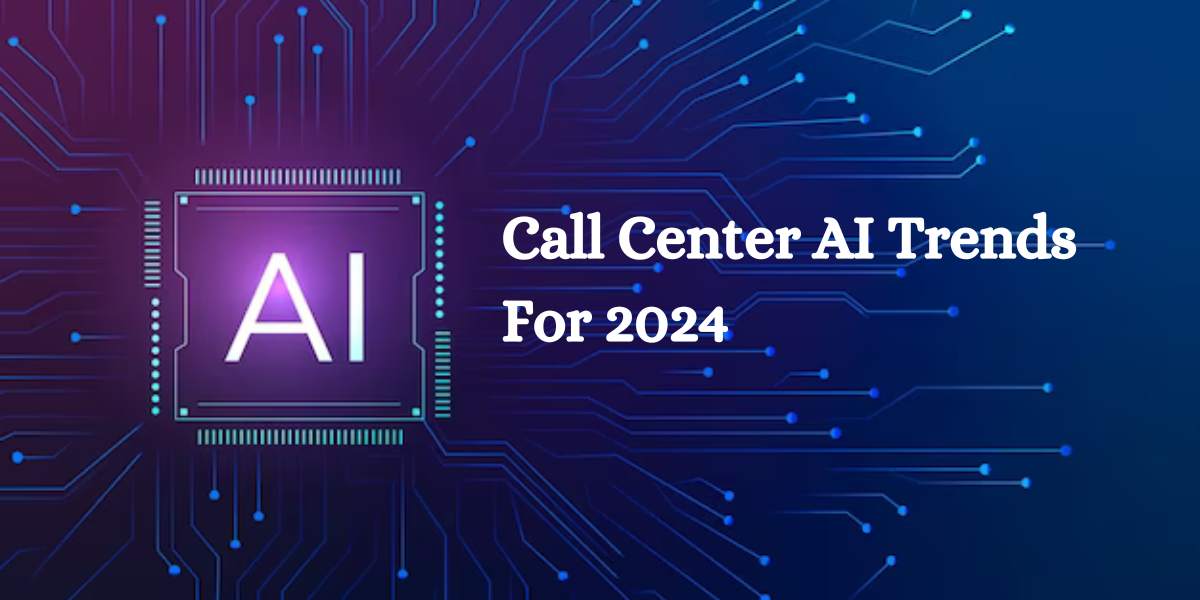Call Center AI Trends For 2024
The landscape of contact centers is rapidly evolving, driven by the impact of COVID-19. The pandemic caused a surge in call volumes and a decrease in available customer service agents, resulting in longer hold times and increased escalations. Many contact centers have transitioned to remote or hybrid work models, prompting companies to invest in new technologies to deliver high-quality and personalized customer service.
In response to these changes, contact center artificial intelligence (AI) is playing a pivotal role in reshaping customer service operations. Here are seven key trends in contact center AI that are transforming the customer service experience in 2024.
1. AI Alleviates Staffing Shortages
The pandemic-induced labor shortages have forced many companies to turn to AI to bridge the gap between high call volumes and a reduced workforce. Research indicates that AI adoption plans accelerated in response to these challenges, with AI and automation-equipped jobs witnessing significant growth. For instance, in 2020, 55% of companies accelerated their AI adoption plans, and 67% of these companies are looking to further accelerate their AI initiatives.
This year, the U.S. jobs market is expected to recover strongly, particularly in businesses that incorporate contemporary technology, with AI and automation-powered jobs seeing a 28% increase over the previous quarter.
2. AI Understands Human Conversation Nuances
Effective AI solutions for contact centers must be perceptive to the nuances of human conversation. Modern AI applications go beyond comprehending what customers say and also focus on how they say it and the context of their inquiries. This improvement over time allows businesses to deploy customer service agents that can understand the nuances of human conversation and deliver a seamless experience.
In fact, studies show that businesses using AI technologies that can pick up on tone of voice, inflection, and mood have seen a significant improvement in overall customer satisfaction, with a 20% increase in customer retention.
3. Contact Center AI Expands Self-Service Customer Experience
The demand for self-service solutions in customer support is growing, with 73% of customers preferring to solve issues on their own. Traditional self-service tools like chatbots and interactive voice response (IVR) systems are evolving. The integration of AI has led to the development of intelligent virtual agents (IVA), which can understand nearly anything the user says. This freedom greatly improves customers' use of self-service options, and companies that implement self-service capabilities see a 25% reduction in response time and a 30% increase in customer satisfaction.
4. 24/7 Customer Service is Expected
AI enables contact centers to provide round-the-clock customer service, eliminating the need for agents to be on-call at all hours. This not only enhances customer convenience but also allows companies to adopt more regular work hours for their employees. AI technology’s 24/7 availability is another offering of convenience and satisfaction for customers, contributing to a 15% increase in customer loyalty.
5. Contact Center AI Pricing is Cost-Effective
Contrary to concerns about the cost of AI implementation, research suggests that investing in AI for contact centers is cost-effective. By 2030, 45% of total economic gains will be attributed to product enhancements, including AI integration. Solutions follow a transactional pricing model, where you pay only for productive time, with no overhead fees. This cost-effective approach allows businesses to allocate employee hours to other key functions and ultimately results in a 20% increase in revenue.
6. Contact Center AI as a Competitive Advantage
Customers increasingly expect personalized service, with 66% of them expecting businesses to understand their needs. AI technology helps businesses meet these expectations by mitigating common CX stressors, such as long hold times and repetitive questions. Companies that embrace AI for their contact centers experience greater year-over-year revenue, with a 25% increase in revenue and a 10% improvement in customer profit margins. This positions businesses as industry leaders and enhances their competitive edge.
7. High Call Volume and Staffing Shortages Continue Post-COVID-19
The impact of COVID-19 on contact centers persists, with high call volumes and staffing shortages remaining challenges. To adapt, companies have embraced remote and hybrid work models and turned to AI to ensure top-notch customer service. For instance, during the initial months of the pandemic, incoming calls saw a 300% increase, leading to a 40% increase in escalations.
Incorporating Contact Center AI Trends into Your Business
These trends offer a roadmap for businesses to accelerate their growth, enhance customer service, and build resilience in an ever-changing industry. By integrating AI into their customer experience strategies, companies can navigate staffing shortages, meet customer needs, control costs, and gain a competitive edge. Embracing these trends positions businesses for success in the dynamic world of contact centers.


Leave a Comment
0 Comment(s)
Your comment is awaiting moderation. This is a preview, your comment will be visible after it has been approved.